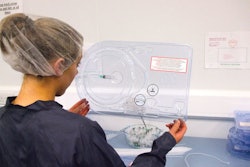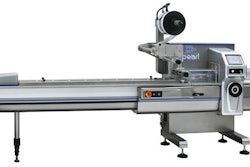A postponement strategy focuses on delaying manufacturing as close to consumer demand as possible. An effective postponement strategy will reduce inventory, improve customer service, eliminate obsolescence, and reduce cost. It enables the right product at the right time at the right place.
Postponement works well for select open-stock SKUs—examples are a four-pack of triple-A batteries or eight disposable razors—as well as promotional packaging. The model I will discuss briefly breaks the manufacturing process into three tiers. Tier 1 is where a basic product unit, without packaging, is produced. Tier 2 is the packaging operation, where final product differentiation is completed for open-stock SKUs. Tier 3 addresses promotional packaging, where displays or combination packs are manufactured to order. For the purposes of this discussion, I will focus on an open-stock postponement strategy.
Open-stock postponement works best for products where the majority of product differentiation takes place in the packaging stage, either in combinations of different products or in packaging quantity. If you are unable to separate the packaging operation from the basic product unit, this model will not apply as easily.
Basic product units are manufactured and stored in a Finished Work in Process (FWIP) buffer inventory area. The reasons are that FWIP inventory will be the basic unit, inventory density can be highly efficient, and inventory cost will be minimized. Packaging centers benefit from being located within key distribution centers along with the FWIP buffer inventory.
Clearly, consumer demand can vary significantly from week to week. Therefore, it is critical for the packaging center to be highly flexible in staffing and packaging capacity. Staffing flexibility is achieved by establishing a two-part model. Full-time core employees—these are generally the higher skilled positions—are supplemented with flexible staffing through the use of temporary workers. Flexible packaging capacity occurs by matching installed packaging capacity to forecast peak demand. Capital costs can be managed by installing manual packaging lines to minimize the expense associated with highly automated lines.
Invariably, the question of outsourcing will come up: whether to outsource parts, or all, of the manufacturing. Typically, the packaging operation represents the least amount of internal manufacturing proprietary technology. Therefore, packaging lends itself more easily to outsourcing, albeit open-stock or promotional. The answer to the outsourcing question will revolve around your assessment of your own core competency. What unique capabilities do you bring to the manufacturing process that are not readily outsourced?
Should you elect to outsource all or part of your manufacturing process, it is critical to understand the challenges you might face. Though there are many to consider, I will briefly touch upon a couple challenges to think about.
The primary, and probably most difficult, challenge is finding the right contract-manufacturing partner. If you operate on a global basis, I would recommend that you select a contractor who can fulfill your manufacturing requirements and operations, or who can operate globally as well. The fewer partners you select to work with, the better.
Culture fit is a second consideration in identifying/selecting your manufacturing partner. Their culture must be compatible with your own. Starting down the road of an outsourcing strategy will be difficult enough without the road blocks associated with a poor culture fit.
Finally, you will want to understand the implications and changes that will be required within your own organization. Here are two:
Organizational design and skills required to support a contract-manufacturing strategy, and the parts of the organization that may be unable to support or become obstacles to the new strategy.
Whether you decide to outsource part or all of your manufacturing process, implementing a postponement strategy will help your organization achieve your cost, quality, and service objectives.
The author, John Farren, has decades of manufacturing experience, including 32 years with the Gillette Co., where he retired as vice president global contract manufacturing and packaging operations. Contact him at [email protected].
























